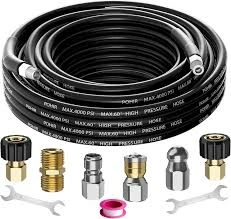Toyota High Pressure Power Steering Hose Replacement Guide for Optimal Performance
Understanding Toyota High Pressure Power Steering Hose
Power steering is a vital component of any modern vehicle, providing drivers with the necessary assistance to maneuver steering with ease. Among its many components, the high pressure power steering hose plays a crucial role in ensuring that the power steering system operates effectively. This article will delve into the significance of the high pressure power steering hose in Toyota vehicles, its construction, common issues, and maintenance tips.
What is a High Pressure Power Steering Hose?
The high pressure power steering hose is a hydraulic line that connects the power steering pump to the steering gear or rack. It is specifically designed to withstand high pressure generated by the steering pump, delivering hydraulic fluid needed to assist in steering the vehicle. The hose is manufactured from durable materials, often reinforced with textile or steel wire, to handle the extreme pressure that can exceed several thousand psi.
Importance of the High Pressure Power Steering Hose
The efficiency of the power steering system heavily relies on the high pressure hose. If it were to fail or become damaged, it could lead to a significant loss of steering assistance, making it difficult for the driver to control the vehicle. This is especially dangerous at high speeds or in tight maneuvers. In addition, a leak in the hose could lead to fluid loss, causing the power steering system to malfunction and potentially damage other components.
Common Issues with High Pressure Power Steering Hoses
Several issues may arise with the high pressure power steering hose over time
1. Leakage One of the most common problems is the development of leaks. This can occur due to wear and tear, excessive heat, or damage from road debris. A leaking hose can diminish the performance of the power steering system.
2. Cracks and Fractures Exposure to extreme temperatures and vibrations can lead to the formation of cracks. These fractures can compromise the integrity of the hose, again resulting in leaks.
3. Blockage Dirt and debris can sometimes clog the hose, restricting the flow of hydraulic fluid. This can create pressure imbalances within the power steering system.
toyota high pressure power steering hose

Signs of a Failing High Pressure Power Steering Hose
As a vehicle owner, being aware of the signs of a failing high pressure power steering hose can help you catch problems early, potentially saving you money on repairs. Common indicators include
- Steering Difficulty If you notice that turning the steering wheel requires significantly more effort than normal, it could indicate a problem with the power steering system, possibly due to a faulty high pressure hose. - Fluid Leaks Puddles of clear, reddish fluid under your vehicle may signal a power steering fluid leak originating from the hose. - Unusual Noises A whining or screeching noise when turning the steering wheel can signify low fluid levels or issues with the power steering pump, which may be related to a damaged hose.
Maintenance Tips
To extend the life of your Toyota’s high pressure power steering hose, consider the following maintenance tips
- Regular Inspections Check the condition of the hose during regular vehicle service. Look for signs of wear, such as cracks or leaks.
- Maintain Fluid Levels Ensure that the power steering fluid is at the appropriate level. Low fluid levels can lead to increased pressure within the hose and ultimately cause failure.
- Avoid Excessive Heat Try to park your vehicle in shaded areas during hot weather, as excessive heat can weaken the hose material over time.
- Prompt Repairs If you notice any signs of hose failure, such as leaks or performance issues, address the problem promptly. Replace the high pressure power steering hose as needed to avoid further complications within the steering system.
Conclusion
The high pressure power steering hose in Toyota vehicles is a critical component of the power steering system. Understanding its function, recognizing potential issues, and staying on top of maintenance can help ensure a safe and smooth driving experience. By taking proactive measures, vehicle owners can avoid costly repairs and keep their steering systems operating at peak performance.
-
Reliable Brake Line Solutions for Your VehicleNewsJun.05,2025
-
Quick Fix for Leaky Air Conditioning HosesNewsJun.05,2025
-
Powerful Sewer Jetting Solutions for Tough ClogsNewsJun.05,2025
-
Power Steering Hose Problems SolvedNewsJun.05,2025
-
Hose Protectors That Actually WorkNewsJun.05,2025
-
Essential Hose Connectors for Every HomeNewsJun.05,2025

